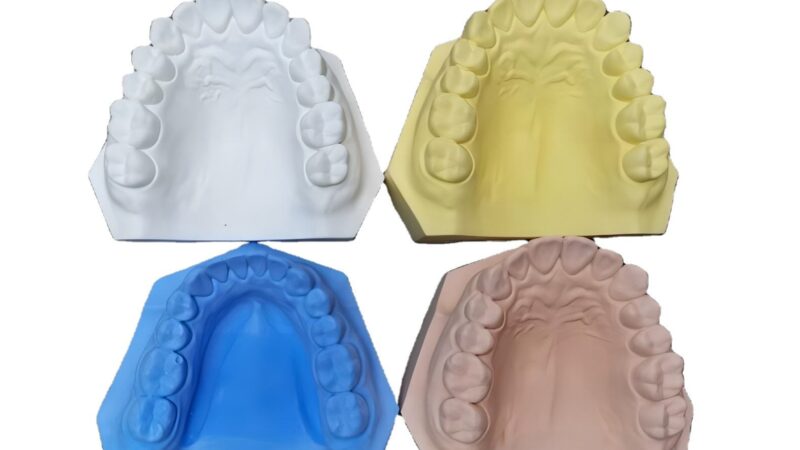Mastering Dental Die Stone: The Foundation of Precision Dentistry

In the world of restorative dentistry, precision isn’t just preferred—it’s essential. Every crown, bridge, and implant restoration depends on accurate models that replicate the exact anatomy of a patient’s oral structures. At the heart of this precision lies a seemingly simple yet crucial material: dental die stone. Understanding its properties, applications, and proper usage can make the difference between a restoration that fits perfectly and one that requires costly adjustments.
Understanding the Science Behind Die Stone
Dental die stone is essentially a refined form of gypsum (calcium sulfate hemihydrate) that has been engineered for maximum strength, minimal expansion, and exceptional surface detail reproduction. When mixed with water, it undergoes a chemical reaction that transforms the powder into a hard, durable material capable of withstanding the stresses of laboratory procedures.
The manufacturing process involves carefully controlling particle size, crystal structure, and chemical additives to achieve specific working properties. This attention to detail ensures that dental professionals can rely on consistent results, batch after batch.
The Critical Role of Material Selection
Not all die stones are created equal, and selecting the appropriate type for each application is fundamental to successful outcomes. Type 4 die stone, with its superior strength and minimal expansion properties, has become the gold standard for working dies in crown and bridge fabrication. Its ability to reproduce fine surface details while maintaining dimensional stability makes it indispensable for precision work.
For implant dentistry, specialized die stone formulations offer enhanced properties specifically designed to handle the unique challenges of implant analog positioning and soft tissue simulation. These advanced materials provide the accuracy required for proper emergence profiles and optimal prosthetic outcomes.
Mixing Mastery: The Art and Science
Proper mixing technique directly impacts the final quality of your models. The water-to-powder ratio must be precisely controlled—typically 19-24 ml of water per 100 grams of powder for Type 4 stone. Too much water weakens the final product, while too little creates a thick, difficult-to-pour consistency that may not capture fine details.
The mixing process itself requires attention to timing and technique. Begin by adding powder to water gradually, allowing it to wet thoroughly before initiating mechanical mixing. A 60-second spatulation period under vacuum conditions eliminates air bubbles while achieving optimal homogeneity. The resulting mixture should flow smoothly while maintaining enough body to prevent running out of undercut areas.
Common Challenges and Professional Solutions
Even experienced technicians encounter occasional issues with die stone work. Air bubbles, incomplete pours, and dimensional distortions can compromise model accuracy. Prevention strategies include proper impression handling, controlled vibration during pouring, and adherence to manufacturer-specified setting times.
Storage conditions also play a crucial role in material performance. Die stone should be kept in sealed containers away from humidity, as moisture absorption can significantly alter setting characteristics and final strength properties. Temperature fluctuations should likewise be minimized to ensure consistent working times.
Advanced Applications in Modern Dentistry
Today’s dental landscape demands increasingly sophisticated approaches to model fabrication. Digital workflows often incorporate traditional die stone techniques, with printed models serving as masters for conventional stone pours. This hybrid approach combines digital accuracy with the proven reliability of stone materials.
Visit this page info for the dental die stone materials options from Dental Laboratrio, the website product extensive dental lab material, including the dental die stone specialty for implant usage.
Implant dentistry, in particular, benefits from specialized stone formulations that accommodate analog systems while providing the precision required for screw-retained prosthetics. These materials often incorporate color-coding systems that help differentiate between different implant platforms and facilitate accurate restoration fabrication.
Quality Control and Best Practices
Establishing consistent quality control protocols ensures reliable outcomes in die stone work. Regular calibration of mixing equipment, systematic evaluation of model quality, and documentation of material lot performance contribute to overall laboratory excellence.
Temperature and humidity monitoring in the laboratory environment helps maintain optimal working conditions for both material handling and setting reactions. Investment in proper equipment—from precision scales to vacuum mixing systems—pays dividends in improved consistency and reduced remake rates.
The Future of Die Stone Technology
Manufacturers continue to innovate within the die stone category, developing formulations with enhanced properties for specific applications. Faster-setting variants reduce laboratory turnaround times, while ultra-high-strength formulations enable more aggressive trimming and finishing procedures.
Sustainability considerations are also driving development of more environmentally conscious products without compromising clinical performance. These advances ensure that die stone will remain a cornerstone material in dental laboratories for years to come.
Conclusion
Mastering dental die stone techniques represents a fundamental skill that supports excellence across all aspects of restorative dentistry. From basic study models to complex implant cases, the principles of proper material selection, precise mixing, and careful handling remain constant. By understanding these fundamentals and staying current with technological advances, dental professionals can ensure their restorative work meets the highest standards of quality and precision.
The investment in quality materials and proper technique always pays returns in improved patient satisfaction, reduced chair time, and enhanced professional reputation.